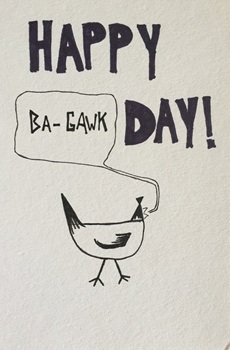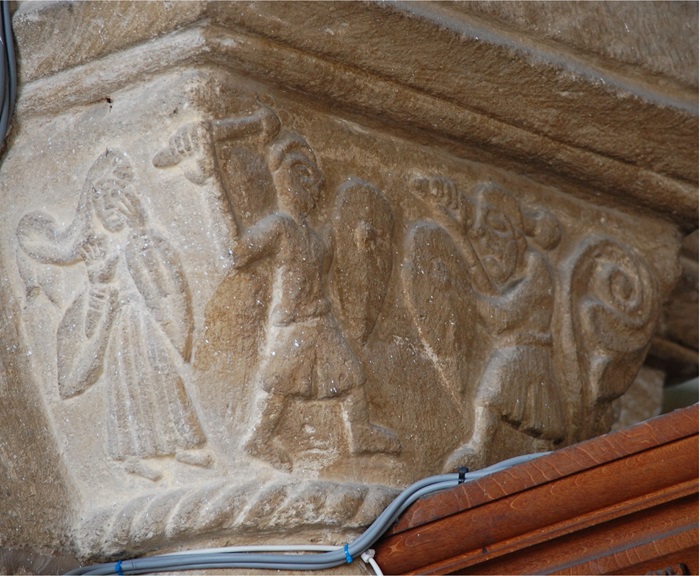Get to Know Elizabeth Pugliano
"I’m a better thinker, a better communicator and a better all-around human for [studying art]," says art history professor Elizabeth Pugliano.
Dec 21, 2022
Elizabeth (Beth) Pugliano, PhD, is originally from upstate New York, just outside of Albany. Her interest in art history started when she took a survey of art history class in high school. After earning a PhD in the subject from Boston University, Beth came to teach at CU Denver in 2016. Attracted by the student-focused nature of the position, Beth says her appreciation for the faculty, staff, and administrators that call the College of Arts & Media (CAM) home has grown due to their care and their desire to see the students grow and experience new things. Beth is also really impressed by the students she teaches. “They come from so many different backgrounds, and they’ve all found their ways here to develop their creative, scholarly and technical interests,” she says. When she’s not teaching, Beth is often working on research projects related to her field of expertise. “One is a study looking at representations of women and gendered imagery in medieval images of combat, and some of the subtle ways gender might be invoked as a signifier in contexts of violence and warfare,” she explains. A second project involves co-editing a volume of 19 essays “exploring how empathy might be expressed or cultivated through works of art,” scheduled for publication in spring 2024. When Beth is not teaching about or researching art, she enjoys playing in the great outdoors. Trail running, hiking, climbing, and skiing or snowshoeing are all on her hobby list—alongside making the occasional baked good or chicken-themed greeting card.
Questions
1. What is the value of studying art?
For me, art and its histories were what flipped that switch in terms of becoming interested in a much wider set of human experiences and endeavors. I took my first art history class in high school, and, even in a sweeping survey, it pretty quickly became clear that to really understand works of art the ways we were being asked to and in ways I found interesting, I had to learn about things like politics, religion, languages, economics, physics, literature, philosophy, social structures, etc. Looking through the disciplinary lens of art history provided a framework for connecting with vastly different people, ideas and experiences, and that is one of the great values I find in studying art. I’m a better thinker, a better communicator and a better all-around human for it.
2. One of your areas of expertise is medieval art. Are there any recurring themes in medieval art that are particularly relevant today?
Tons! What we typically consider “medieval art” encompasses about a 1000-year period and an enormous geographic expanse including (at least) all of Europe and the Mediterranean basin so there is a lot of variety that I’m condensing here but, at its core, a lot of medieval art centers on questions like how one should live and what it all means. The ways medieval peoples might answer those questions may differ from how we think about them today, but seeking meaning in life and trying to understand what we all go through seem relevant still today. Additionally, artworks from throughout the Middle Ages tap into issues of identity, gender and its expression, race, humor and irreverence, place and travel, and conflict and violence, all of which resonate with conversations and questions percolating around us today. I’m teaching medieval art in the spring (FINE 4680/FINE 5680), centered around these themes, and I can’t wait to engage in these conversations with students.

3. You are co-leading the study abroad trip to Egypt this coming year. What are you looking forward to showing students on this trip?
I’m really excited to show students—and to see in person myself—some of the monuments of ancient Egypt like the pyramids at Giza. The longevity of ancient Egyptian civilization, lasting thousands of years, is staggering, and I think seeing those things in person makes that age and the scale on which Egyptian society could operate visceral in ways we just can’t replicate through books or digital images. At the same time, I’m also looking forward to connecting students with artworks from later periods, such as Fatimid Egypt in the Middle Ages and the contemporary arts scene. So much of the pop cultural image of Egypt plays on the ancient world, and we can easily get stuck there and forget that Egyptian history and culture encompass so much more. There is a bit of contradiction in those two areas (seeing the ancient monuments but also moving beyond the ancient civilization), but art often leaves room for some nuance.
4. What do you enjoy about teaching? What is your biggest teaching challenge?
One thing I love about teaching is that students always think about artworks in ways I haven’t yet and ask questions that never occurred to me. Teaching is in many ways being on a journey with students, and in this regard it’s like visiting places you’ve seen hundreds of times with someone who has never been. They help you see it with fresh eyes, and I continue to learn through their questions and perspectives. In terms of challenges, time is one of the biggest and most persistent. Every student and every class deserve full attention and energy, but of course there is only so much to go around, and directing time and attention strategically and effectively changes semester to semester.
5. Can you tell us about a gallery or museum exhibition you’ve seen recently that you particularly enjoyed? What about it made it original?
I was just in Baltimore for the SECAC annual conference and I had a chance to visit the Activating the Renaissance exhibition at the Walters Art Museum. It places contemporary artworks in dialogue with European artworks from the Renaissance and Baroque periods to highlight some of the ways art and artists engage in ongoing conversation across time, geography and culture. As an art historian who tends to focus on old artworks, I find these kinds of dialogues to be helpful bridges between past and present. The juxtapositions within the exhibition also invite questions about representation in the arts and prompt viewers to pay attention to who is shown and how in artworks from different times and places.